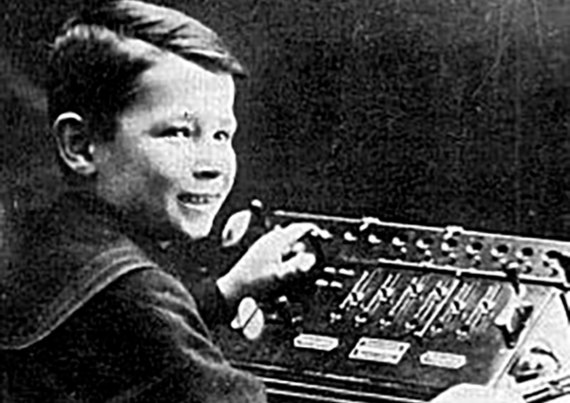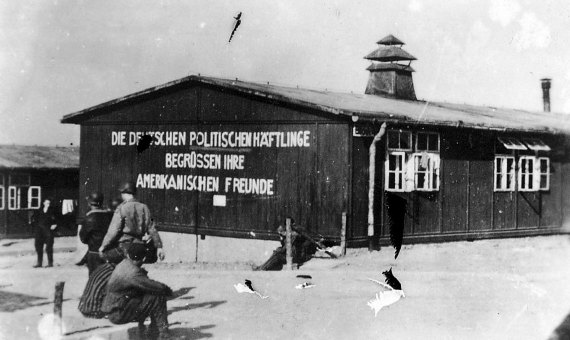One of the greatest little technological wonders of the 20th century came out of a Nazi concentration camp. The Curta was the first pocket calculator and also achieved two other great feats: first, it saved the life of its creator, Austrian prisoner Curt Herzstark; and then, after the Second World War, it became an indispensable tool for engineers and accountants. It fit in one hand, could be operated with a single finger and allowed the user to add, subtract, multiply and divide, as well as calculate powers and roots.
Its history is inextricably linked to that of its inventor, engineer Curt Herzstark (26 July 1902 – 27 October 1988). Seldom has the expression “life, work and miracles” of a person been so appropriate. The son of the founder of Austria’s first calculating machine factory (Samuel Herzstark, a Jewish family businessman), Curt’s childhood was spent in the workshops where these devices became a reality. It was only natural that he later studied mechanical engineering and joined the family business.

It did not take him long to demonstrate his inventiveness. In 1928 he patented his celebrated Multimator —a machine capable of adding rows and columns of numbers in a single operation and automatically— which caused a sensation at an international exhibition in Berlin. By the early 1930s, he had begun to think seriously about developing a miniature calculating machine, encouraged by the wishes of his customers. In fact, he even filed a patent application in 1938 (for the cylindrical calculating mechanism on which it would be based), but he could hardly have suspected where and how he would end up completing his design.
An intellectual slave
By the time Hitler invaded Austria in March 1938, Curt Herzstark had already replaced his father at the head of the company. Two months later, a Nazi entourage visited the factory and made him an “unrefusable” offer: to start manufacturing weapons and measuring instruments for the German army. Herzstark had to put the idea for his handheld calculator on hold. After five years of “forced labour” for the Nazis in the factory, in 1943 the Gestapo arrested two of his workers for listening to British radio broadcasts and printing subversive messages. As the head of the factory, he was subjected to an exhaustive investigation (a bad thing considering his Jewish ancestry). A few days later, in November 1943, he was arrested and sent to the Buchenwald concentration camp.

After arriving, he was just waiting for his turn to die, but his engineering skills ended up rescuing him. He was soon sent to work at Gustloff-Werk —a mechanical factory linked to the Buchenwald camp where 4,500 prisoners worked. This made his existence easier and more pleasant. In fact, his work as an “intellectual slave” was so satisfactory to those in charge that he was given permission to work on the plans for his hand calculator in the evenings and on Sundays, on the condition that, when it was completed, it would be presented as a gift to Hitler at the end of the war.
In that concentration camp, Herzstark managed to give the final push to his design plans, although with a very different end to that planned by the Nazis. In April 1945 he was liberated from Buchenwald by the American army. As soon as he had recovered his freedom, and with the construction plans for his invention now concluded, he managed to be appointed director of a large typewriter and calculating machine factory. There he was able to start producing the first prototypes of his designs, but his odyssey was not over. The factory was in the area of Germany controlled by the Soviets and, alerted by the news that many German experts were being deported to Moscow, Herzstark decided to take a chance and return home to Vienna.

A radically different invention
He was finally reunited with his family in December 1945, but he soon discovered to his dismay that his prodigious machine did not fit into the plans of his brother, who now controlled the family factory. Thus he was forced to emigrate again in search of funding to produce his device, this time to Switzerland. When he finally succeeded, he was asked by the Liechtenstein government to show a prototype to Prince Franz Josef II, who was looking for innovative talent for his country. Herzstark decided to settle in Liechtenstein, now definitively, as director of a new factory for the production of his invention, the Contina AG. At the end of 1948, the first units of the Curta calculator were released—a definitive name in homage to its inventor, after the one he wanted was discarded: Lilliput.

The Curta turned out to be a radically different invention from the much larger calculating machines in existence at the time. It was a mechanical calculator with a compact and robust cylindrical design —barely 10 cm high and just 230 grams— whose core was a column of 37 sprockets based on the Leibniz cylinder. Herzstark had optimized it to perform a multitude of mathematical operations, with an accuracy to 11 digits.
And best of all, it could be held with one hand and operated with a single finger from the other hand, thanks to an ingenious system of sliding levers. These features were more than enough to make the Curta an indispensable tool for engineers, surveyors, accountants and even rally drivers for the next two decades, until the first electronic pocket models were introduced in the 1970s. It was also used to determine the orbits of the first satellites and the trajectories of the first Apollo missions to the Moon. The Curta ceased production in 1972, by which time more than 140,000 units had been sold.
Comments on this publication